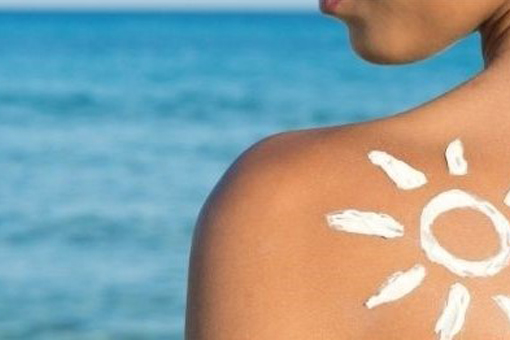The great enemy of skin ageing and its well-being is solar radiation in all its forms.
Sunlight is essential for life, but it can also be very harmful to our skin and eyes. Sun damage is skin damage caused by prolonged exposure to the sun’s radiation, which accumulates over the years. It is therefore important to protect ourselves to avoid the negative effects of radiation on our health. Continuous exposure to free radicals in the skin causes 80% of skin damage and ageing.
The skin has a memory and sun damage is cumulative. The skin produces melanin to protect us from UV radiation, leading to tanning. However, sometimes melanin synthesis is not sufficient to absorb all the radiation, which damages the DNA of the cells, causing DNA mutations.
This process, repeated successively over time, leads to more and more mutations in the cells, until the sun damage is so great that it causes skin diseases. Therefore, it is important to be aware that some of the sun damage we receive with each sunburn remains in our cells forever, i.e. it accumulates. Thus, the more radiation we have received, the more likely we are to suffer the consequences.
CONSEQUENCES OF THESE DREADED FREE RADICALS
- Acceleration of oxidative stress in cells.
- Deterioration of collagen and elastin fibres.
- Damage to the DNA of epidermal cells.
Ultimately, there is a premature skin ageing. We can notice this when our skin is dehydrated, dull, with marked expression lines and rough to the touch, causing photoaging or photoaging of our skin.
Photoageing is the result of natural ageing, to which we are all exposed, plus exposure to other factors such as ultraviolet radiation, pollution, ozone, tobacco and climate change. But, without a doubt, exposure to solar radiation is the main culprit:
- Infrared: generates redness, burning and drying.
- Visible light: has no negative effects per se, but can cause light allergies.
- UVA radiation: causes spots, toxin formation, and photosensitisation when combined with certain substances and enhanced by UVB.
- UVB radiation: causes erythema, thickening of the stratum corneum, alteration of the immune system and skin cancer.

As a direct consequence of the necessary oxygen consumption by aerobic living organisms, its intensity and consequences depend on the ability of our specific defence systems to counteract the reactive oxygen species (ROS) generated, among which oxygen free radicals (OFR) are the most important. When an imbalance in free radical formation occurs, the body’s antioxidant system is unable to manage it. When this happens we speak of oxidative stress.
At the cutaneous level, free radicals can cause accumulation of oxidative damage to molecules such as collagen and elastin (glycation), promote the accumulation of pigments such as lipofuscin and melanin causing blemishes, and cause fibrosis in the vessels that nourish the dermis, entrenching gestural wrinkles. Glycation is a spontaneous reaction of blood glucose with dermal collagen and elastin fibres. The accumulation of glycation products (AGEs) is greatest in structural proteins, such as collagen and elastin, as they have a slow turnover time.
The formation of intertwined and rigid molecular bridges between protein fibres with a reorganisation of the network leads to a loss of firmness, elasticity and mobility of the skin. Glycation increases exponentially with age from the age of 35 onwards.
Pro-inflammatory substances that are produced in a sustained manner cause DNA damage and, together with the production of ROS and nitrogen, lead to further cell damage. If, in addition, protective systems such as cell apoptosis fail to eliminate these altered cells and the excessive production of ROS and nitrogen, it induces different types of skin cancer.
WHAT ARE THE SIGNS ON WHICH A PRODUCT SHOULD ACT AND EVALUATE ITS EFFECTIVENESS?
- Wrinkles and expression lines: With age, the production of cells in the epidermis decreases, making it thinner.
- This makes the skin thinner and more easily wrinkled.
- Elasticity and firmness: The older we get, the less elastin and collagen we produce, resulting in skin that sags under the effect of gravity.
- Skin spots: Melanocytes are the pigmentation cells, and in the ageing process their number decreases and they increase in size, forming spots on the skin, especially in areas most exposed to the sun, such as the hands or face.
- More fragile blood vessels: Bleeding appears under the skin (ecchymosis).
- Dryness and tightness: The sebaceous glands decrease their production of sebum, which is an oily substance that protects the skin from water loss. With less sebum production, the skin tends to become dehydrated and drier.
- Lack of radiance: The skin appears duller, due to hormonal changes in women after the age of 35.
Iván Parra Guerra
Commercial Director at Dr. Goya Análisis


